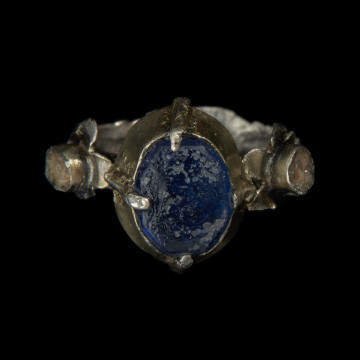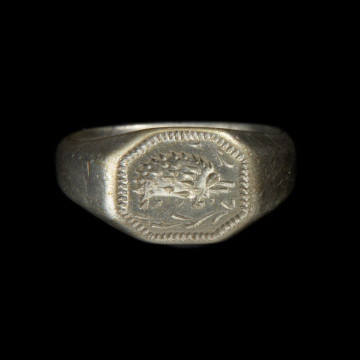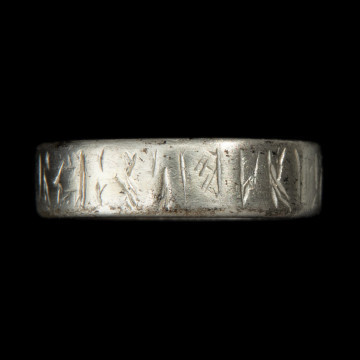
Blue eyelet ring
National Museum in Szczecin
Part of the collection: Szczecin treasure from Podzamcze
As a type of metal fastener, a hook was also used to decorate clothes, to which great importance was attached in the late Middle Ages. It is called an embroidery hook when it forms a bipartite fastener consisting of a hook and eye. These delicate and small decorations were sewn to the cloth through holes hollowed in it or soldered ears. Sometimes hooks were fixed on the fabric with a rivet. These fastenings were characteristic of the 14th - 15th-century fashion. A collection of silver gilded hooks was discovered in 1999 in Szczecin near Podzamcze. They were part of a treasure trove of jewellery, costume ornaments and silver Pomeranian coins. Among the hooks, the most noteworthy is a piece with a hook decorated with a two-headed eagle, symbolising power and dominion. This image was part of the municipal coat of arms of Lübeck, which led the Hanseatic League and conducted extensive trade with Szczecin. The button of the hook was additionally equipped with a button made with the use of the repousse technique, i.e., decorating metal products by cold hammering, which results in a convex pattern on the other side.
Małgorzata Peszko
Author / creator
Dimensions
cały obiekt: height: 21,7 mm, width: 29,2 mm
Object type
menswear
Creation time / dating
Creation / finding place
Identification number
Location / status

National Museum in Szczecin

przełom XIV i XV wieku
National Museum in Szczecin

przełom XIV i XV wieku
National Museum in Szczecin
DISCOVER this TOPIC
Castle Museum in Łańcut
DISCOVER this PATH
Educational path